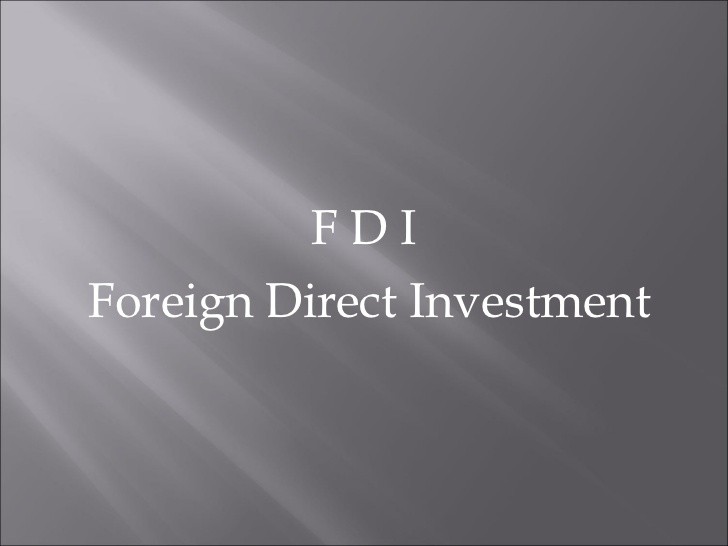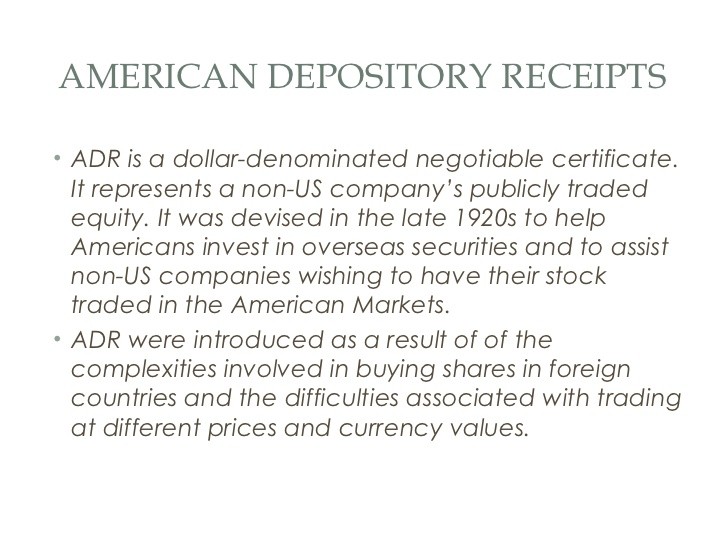Investing in Foreign Stocks ADRs and GDRs
Post on: 5 Июнь, 2015 No Comment

Investing in foreign stocks should be part of any investor’s portfolio. Not only does it diversify your holdings, it offers plenty of opportunities to profit from trends and developments outside your home country .
The U.S. currently accounts for nearly half of the world’s total stock market value, but that’s likely to decline in the years ahead as more investors look to emerging markets such as China and India.
Below is an overview of the easiest ways to invest in foreign stocks, whether you live in the U.S. or any other country.
DRs (Depositary Receipts)
A depositary receipt is a negotiable financial instrument issued by a bank to represent a foreign company’s publicly traded securities. The depositary receipt trades on a local stock exchange. such as the New York Stock Exchange (NYSE) in the U.S. but represents an interest in a company that is headquartered outside of the United States. A depositary receipt traded in Germany would represent a non-German company.
A DR can be sponsored or unsponsored. The sponsored variety is issued with the knowledge and cooperation of the underlying foreign company. With this cooperation, a sponsored DR usually lets the owners have the same rights normally given to the stockholders in the home country, such as voting rights. An unsponsored DR may not have the same voting rights.
ADRs (American Depositary Receipt)
An American Depositary Receipt (ADR) is a negotiable certificate issued by a U.S. bank representing a specified number of shares in a foreign (i.e. non-U.S.) stock that is traded on a U.S. exchange. ADRs are denominated in U.S. dollars, with the underlying security held by a U.S. financial institution overseas. ADRs help to reduce administration and duty costs that would otherwise be levied on each transaction.

It’s important to note that an ADR must be sponsored by the underlying corporation. If not, the security is likely to be traded over the counter. which is considered more risky because there are fewer regulatory requirements.
In most cases, a foreign firm trading OTC will have a five letter ticker. For instance, European Aeronautic Defence and Space Company N.V. trades under the U.S. ticker “EADSF.” In contrast, an ADR may trade with the common three ticker symbol on the NYSE. Swiss-based ABB Ltd. trades with the symbol “ABB” on the NYSE.
Overall, there are four levels of ADRs. The chart below explains the difference between sponsored and unsponsored ADRs, as well as different levels of sponsored ADRs and U.S. Securities and Exchange Commission (SEC) reporting requirements.
You can see that the unsponsored variety trades over the counter, which leaves more work to the investor to determine if the voting rights are the same. These shares may also have much less liquidity. To determine which level a company trades at, an investor should check the SEC site (sec.gov) to see which forms have been filed. Checking on the website of a depository bank or ADR.com can also provide insight into a company’s filing status.
Type of Program














